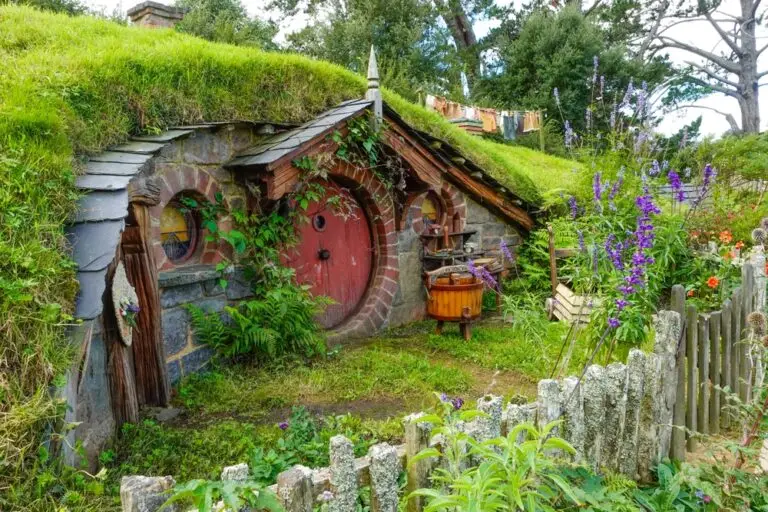
A Socialist Reads The Hobbit Part 13 – Meet the Dragon

There is a potential problem of writing a book structured like The Hobbit. It is basically a picaresque novel , with the characters setting out on a journey and encountering a series of adventures one after the other. Each one has to be interesting enough to hold the attention of the reader , and preferably each one should be more interesting than the last. But you don’t want the key one to be an anti-climax. This is the danger when we finally meet the Dragon.
But is a test it passes with flying colours. Smaug turns out to be an interesting and intelligent villain. Dragons are one of the most popular of mythological creatures. In fact, after vampires I would say they are the most popular. They have many antecedents in many cultures and storytelling formats.
I suppose the most famous dragon is the one in the story of St George. But we don’t really have very clear picture of his personality. St George is the main protagonist of the story, and the dragon exists only to give him something to fight against. St Georges dragon doesn’t even have a name. A dragon with a bit more character and one which Tolkien would have certainly have been familiar with is Fafnir from the Nibelung Legend. This dragon, in fact, is not a full biological dragon. It is a transformed form of a giant so presumably doesn’t have dragon DNA. Dragons being something that evil people and creatures get turned into as a result of their evil sounds very much like the kind of idea that Tolkien would have enjoyed. But he doesn’t pick up on this, his dragon is a dragon that was born and remains a dragon.
The other dragon which Tolkien would have known a lot about would be the dragon in Beowulf. Again this dragon is a little bit anonymous and its description in the poem doesn’t tell us a lot about it. It breathes fire and it’s blood is dangerous, but we don’t get much more detail than that. However there is one feature from Beowulf which appears in The Hobbit. He is angered by somebody stealing one of his cups.
With few antecedents to guide him Tolkien does what he likes doing most. He creates a race of dragons with common properties and fits Smaug into a tradition. So this in turn allows for other races to develop suitable protocols for dealing with dragons. This means that when Bilbo meets Smaug he already has some preconceived ideas about how to handle the meeting with him. As is often the case in Tolkien, this adds a certain depth to the description of the encounter. We are invited to imagine dragons are such a common thing that everyone knows what to do, or at least what you should do, when you happen to run into one. It makes dragons seem a lot more believable. A simple literary trick, but it works time after time.
What Tolkien didn’t realise was that his subconscious socialist self was also creating a great simile for the likely final phase of free market capitalism. The dragon has now accumulated all the capital available and is controlling it via the ultimate form of monopolistic control of capital. He is sitting on top of the spendable wealth of whole kingdoms. He isn’t using it for any productive purpose. In doing so he is reducing liquidity to close to zero with the inevitable result that economic growth in the region has now ended.
As a ruler born with a repressive apparatus, he is no longer even in need of servants to act as his agents. The area under his control is known as the Desolation of Smaug, and it is pretty much in a permanent state of economic depression – the ultimate endgame of the capitalist project of accumulation. The dragon himself fiercely guards his wealth having turned the Lonely Mountain into the gated community to end all gated communities.
Indeed the dwarfs are only able to gain entry via a secret door which can only be seen on Durin’s day. This had been set up by the meeting with Elrond and is dealt with very charmingly, with Bilbo saving the day. He has grown in stature as the book progresses and is now very much the de facto leader of the expedition. He seems to have a much better grasp of the practicalities than his dwarf friends, and he does of course have a magic ring.
So he goes down the secret passage and is aghast at the size of the dragon. He feels the need to demonstrate his burgling skills and steals a gold cup. The dragon’s conversation with Bilbo is interesting for a number of reasons. He certainly sounds like a very particular kind of upper class Englishman, who you don’t encounter so often any more. These people would typically be ex-army officers. Christopher Lee, who was actually a friend of Tolkien’s would be a typical example. These people are invariably polite but are also extremely self-confident and very superior. Like ruling classes everywhere, they are extremely keen on the enforcement of property rights. Losing a tiny fraction of his wealth was sufficient to invoke an angry and extreme response.
Incidentally I did wonder if the details of the conversation reflected the kinds of status based exchanges that Tolkien would have been very familiar with. Bilbo is certainly careful to flatter the dragon, and gets put down when he oversteps the mark.
Smaug attempts to kill Bilbo by blowing fire at him, but misses. Angry, he sets off to attack Lake Town. We are now witnessing the violence inherent in the system which lies behind the politeness. Before doing so he seals up the secret door which has the effect of leaving the dwarves trapped in the mountain itself. They escape through the front door, and initially find themselves somewhat at a loss for what to do. They have, as usual, lost their supplies. In what would have been the anticlimax of all literature they start preparing to flee the mountain before the dragon gets back. But luckily they get news from the ravens that Smaug is dead. Against all hope, Thorin has indeed recaptured the old kingdom of the dwarfs and is now really the King Under the Mountain.

